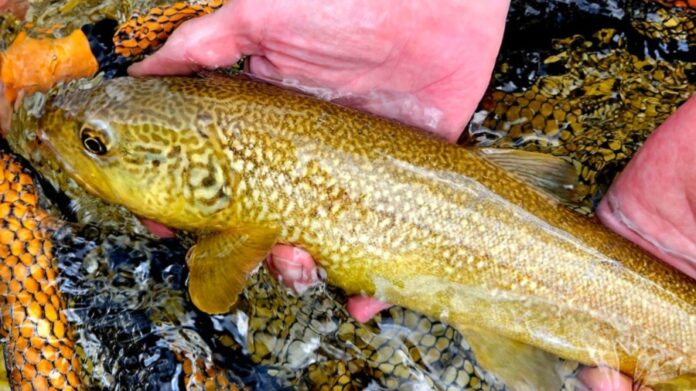All photos by Nina Kramar, Krka River Lodge
Marble trout (Salmo marmoratus) inhabit an extremely small range, limited to just a few rivers within the Adriatic Basin in Europe. Their scarcity makes them a coveted catch for many fly anglers, who come from all over the world for the chance to check this species off their bucket list. During a recent trip to Slovenia, I was fortunate enough to get my own chance to chase marble trout in the stunning Soča Valley, a dream I’d had for more than decade leading up to that fateful day. Ultimately, I was successful, but there were a few aspects of the fishery that surprised me, even as a well-traveled trout angler. If this is a trip you’re considering, or maybe just dreaming about, here are three bits of advice that ended up serving me well.

1. Hire a Guide
While I often enjoy DIY trout fishing, hiring a guide for my day of chasing marble trout turned out to be an excellent decision. I went with Nina Kramar, head guide for the Orvis-endorsed Krka River Lodge. Licensing can be a bit tricky in Slovenia, but she handled that process before we even got to the water. We had access to areas that were off-limits to the general public thanks to her local connections, and she knew all the best spots to focus on, saving us a lot of precious time looking for fish. Speaking of which, it turns out that marble trout are pretty hard to see, and often sit in some unexpected lies–namely, shallow, featureless riffles–which I might have otherwise walked right past without expert guidance.

2. Bring Two Rods
Slovenia forbids the use of multiple hooks on a single line, limiting anglers to fishing one fly at a time. Without the option to use a dry/dropper rig, you end up needing to switch back and forth between a nymph and a dry fly fairly frequently throughout the day. If you’ve only got one rod, you’ll either have to change the leader each time, or make due using a tapered leader for shallow nymphing, or a level-line for presenting dry flies, neither of which is ideal. Instead, bring a rod rigged for dries and a separate rod for nymphs that you can swap out in a few seconds without having to re-rig. I suggest using softer-action rods here, in order to help protect the very light tippets (5x-7x) you’ll need to use in such clear water.

3. Stay Late
Marble trout belong to the same genus as browns, and they seem to behave similarly. Expect them to be more active at dawn and dusk, and to spend much of the midday heat sulking out of sight. My guide suggested that we divide our day into a morning and an evening shift, with a long, leisurely lunch break in between. While it was admittedly difficult to leave the river at first, having a chance to rest and recuperate before the evening rise was crucial, allowing us to return to the water fresh and ready for action. And the marbles did not disappoint: I hooked more fish during the last hour of daylight than I had all day, and all on dry flies. If your schedule allows, try to pace yourself so that you can hold out until sunset.
Evan Jones is the assistant editor of the Orvis Fly Fishing blog.
Credit: Source link






























